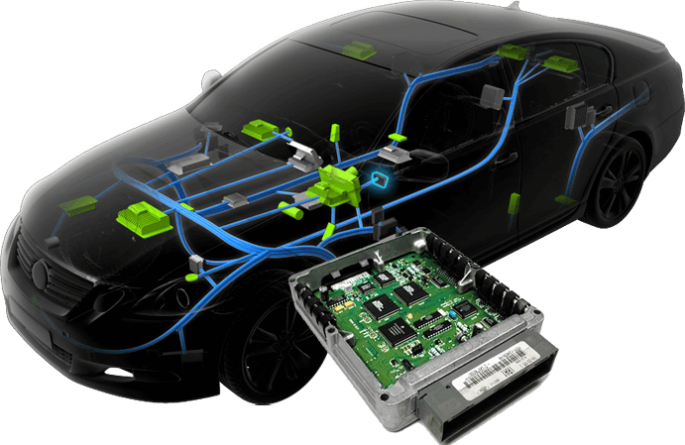Automotive ECU Market – New Technological Development Projecting Massive Growth till year 2032
The global automotive ECU market is anticipated to witness an opulent growth opportunity over the forecast period from 2022 to 2032 with a valuation likely to reach around US$ 29.9 Bn in 2022 and the market is anticipated to surpass a valuation of around US$ 49 Bn by the end of 2032.
As per the historical valuations, the global automotive ECU market was valued at around US$ 28.2 Bn in 2021. The growth in the previous years is attributed to the number of computer-based functionalities in automobiles having increased at an exponential rate.
The global Automotive ECU Market exhibited a CAGR of 6.1% within the last four years ranging from 2017 to 2021. At present, up to 2500 signals (i.e., basic information such as the vehicle’s speed) are exchanged over five different types of networks by up to 70 electronic control units. This trend is expected to continue. The ECU sales in the automotive industry increasing exponentially over the next decade.
Request a Sample of this Report: https://www.futuremarketinsights.com/reports/sample/rep-gb-1790
A significant improvement in technologies in vehicles has been witnessed owing to improved safety, convenience, and comfort technologies in vehicles, as well as the increased demand for hybrid and electric vehicles, which are the primary growth factors for this market. Several ECU functions are not stand-alone, it is crucial that they must communicate and store information with other functions.
Key Takeaways
- State regulations and annual inspection of sophisticated ECUs of critical nature have forced the manufacturers to shift towards standardization of ECUs for cost minimization, such as restricting exhaust emissions or mandating active safety devices such as ADAS, and safety systems.
- Customers are in constant search for automobiles that are more convenient, simple to drive, and safe while on the other hand automakers are willing to produce more inventive products. Although both are costly integrated ECUs appear to strike a good compromise between cost and product innovation.
- Over recent years, the use of highly distributed automotive ECUs in vehicles has significantly increased. When a massive number of ECUs are mounted on a vehicle then automatically the space available becomes limited. Resulting in manufacturers adopting integrated ECUs that handle many control functions from a single device to save weight and space.
- The global automotive electronic control unit market is predicted to rise owing to the increasing adoption of integrated ECUs. According to a telematics standpoint, standardization is already a well-known issue in terms of vehicle electronics. This could create an opportunity for the ECU market to see significant revenue growth.
- The ECU sets are able to be adjusted in order to achieve the vehicle’s smooth performance and also help in improving the fuel efficiency of the vehicle. These improved models fitted with ECUs are the key reason for the market growth in the past decade.
- The global automotive ECU market is anticipated to surge at a stable rate of 5.1% CAGR over the assessment period. The United States is expected to dominate the global automotive ECUs market by accounting for the largest market share throughout the analysis period accounting for over US$ 17.4 Bn absolute dollar opportunity in the coming 10-year period.
Request for Customization: https://www.futuremarketinsights.com/customization-available/rep-gb-1790
Competitive Landscape
Automotive ECU manufacturers are rapidly setting up collaborations with other prominent companies along with launching new products in the ECU market.
The key companies operating in the Automotive ECU Market include:
Continental AG, Denso Corporation, Garmin Ltd., Harman International, Infineon Technologies AG, Robert Bosch GmbH, Delphi Technologies, Mitsubishi Electric Corporation, Johnson Electric Holdings Limited, Texas Instruments Incorporated, Panasonic, Aptiv, Verizon, Intel Corporation, Renesas Electronics Corporation, Microsoft Corporation, Kontron AG, ARM Limited, Fujitsu Limited, Microchip Technology Inc., Xilinx, STMicroelectronics, Sierra Wireless, Zhuhai ENPOWER Electric Co., Intellias Ltd, HYUNDAI MOBIS, Lear, Hitachi Astemo, Ltd., Marelli Holdings Co., Ltd., and BorgWarner Inc.
More Insights into the Automotive ECU Market
The North American ECU market was valued at around US$ 11.6 Bn of the global Automotive ECU and over the forecast period, it will have US$ 20.2 Bn in revenue by 2032. The surging growth of the Automotive ECU market in the region is attributed to the increasing awareness of battery-powered and Electric vehicles along with stringent government norms to drive the green mobility solution.
Several strict mandates have been issued by various governments of North American countries in order to reduce their carbon footprint and enhance air quality has positively impacted the Automotive ECU Market.
The United States is expected to account for around US$ 17.4 Bn of the global Automotive Electrical ECU Market by the year 2032. Automotive ECU Market growth from 2017 to 2021 was estimated at 5.8% CAGR. In the United States, the regulatory authority has enacted strict fuel emission restrictions as well as heightened road safety protocols.
To reduce carbon footprints and encourage the use of electric vehicles as an alternative to conventional automobiles, the United States has enacted rigorous rules. These actions are expected to boost market growth in the future.
Request for Report Ask A Question: https://www.futuremarketinsights.com/ask-question/rep-gb-1790
Key Segments Covered In Automotive ECU Market Survey
Automotive ECU Market by Application:
- ADAS and Safety System
- Body Control and Comfort System
- Infotainment and Communication System
- Powertrain System
Automotive ECU Market by Propulsion Type:
- Electric
- Hybrid
- ICE
Automotive ECU Market by ECU capacity:
- 16-bit ECU
- 32-bit ECU
- 64-bit ECU
Automotive ECU Market by Vehicle Type:
- Heavy Duty
- Medium Duty
- Light Duty


